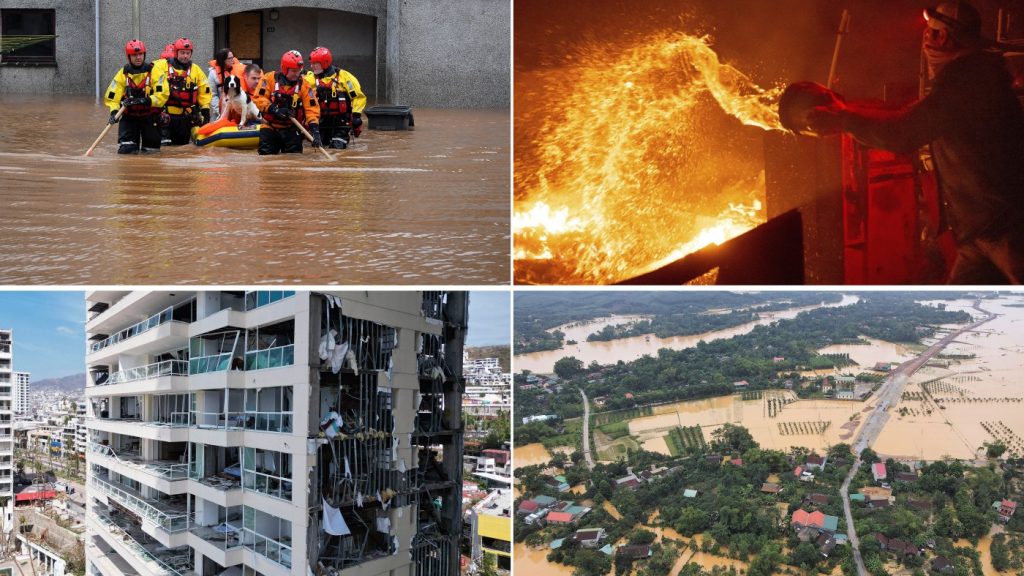There’s good debt and there’s bad debt. Good debt is a $465 million government loan for your fledgling electric-car company that helps it become the world’s biggest automaker. Bad debt is maxing out your credit cards to buy cartoon apes in 2022.
Depending on your politics, you might consider a government taking out loans to finance the clean-energy transition to be bad debt. But economists keep pointing out that a little bit of deficit spending to fight climate change today will save a whole lot of deficit spending tomorrow, to not only fight a rear-guard action against global heating but also to clean up the expensive mess it will make.
Unfortunately, the politics of green government spending aren’t exactly having a banner year. European parliamentary elections hit green parties particularly hard, the U.K.’s Labour Party has scaled back its climate plans, and the deeply climate-unfriendly Donald Trump stands a real chance of winning a return to the White House in November.
A lot of this anti-green momentum comes down to popular anxiety about high living costs in the wake of the COVID pandemic. Though clean energy is on the whole cheaper than fossil fuels, the transition can be costly in the short term, and poorly designed plans can saddle lower- and middle-income people with the burden, as my Bloomberg Opinion colleague Lara Williams has written.
It’s become an effective wedge issue for right-wing politicians around the world. Inflation has also forced central banks to boost interest rates, making green investments much more expensive and raising the costs of servicing government debt that ballooned during the pandemic.
Cleaning up messes
But none of this is happening in a vacuum. Whether voters or politicians care or not, the climate is changing, and the costs of that change are mounting. The U.S. alone suffered a record 28 climate-related disasters last year costing $1 billion or more each, according to the National Oceanographic and Atmospheric Administration.
It’s matching that pace so far this year, even before what will probably be an active Atlantic hurricane season, turbocharged by sauna-like ocean water and the La Niña weather pattern. Adjusted for inflation, the U.S. has averaged 20 such disasters per year over the past five years, compared with an average of just three per year in the 1980s.
Many of the costs of disaster cleanup are borne by, you guessed it, those cash-strapped governments. They’re also on the hook for shoring up military bases, critical infrastructure, nuclear facilities and more against increasingly chaotic weather, while fighting forest fires and helping farmers and ranchers, to name a few of the expensive obligations detailed in a White House report in March.
Climate change’s biggest fiscal hit to governments may not be disaster clean-up and prevention but increased health care spending. Most of the estimated 2.2% boost to annual government spending triggered by unabated climate change will be chalked up to higher health care costs, according to an estimate by ETH Zurich climate economist Lint Barrage. Hotter weather exacerbates heart disease, diabetes, asthma, mental illness and other chronic conditions, while encouraging the spread of infectious diseases from dengue fever to toxic mushrooms.
Hotter weather also saps worker productivity and cognitive development in children. Throw that in with all the other climate-fueled nightmares, and economic activity will suffer. A heating planet could leave global GDP 20% lower by mid-century, according to one study. It might already have shaved 37% off GDP since 1970, according to a recent National Bureau of Economic Research study. That’s a lot of lost tax revenue for governments, particularly if they stubbornly refuse to tax the carbon spewed while powering their economies, cough the United States of America cough.
Delay is costly
The net result is that delaying climate spending now will lead to even more climate spending in the future, when prices will be even higher and the need will be even more dire.
“Kicking the fiscal can down the road on measures that could accelerate the green transition will probably lead to greater macroeconomic and fiscal adjustments further down the line,” Capital Economics economist Hamad Hussain wrote in a report last week.
Hussain cited a 2021 study by the U.K.’s Office for Budget Responsibility, which estimated that delaying transition plans by a decade would cut that country’s long-term GDP by 3% compared with investing the money now, even as public spending would end up 50% higher. The government’s debt-to-GDP ratio would be 23% higher by 2050 if it delayed green spending by a decade than if it acted earlier.
Related Articles
Supreme Court halts enforcement of EPA plan to limit downwind pollution from power plants
The West is warming and drying so fast that a crucial drought-monitoring tool can’t keep up, study says
Lots of gray whales are swimming under the Golden Gate Bridge into San Francisco Bay. Why?
Rebuilding Paradise: Nonprofit’s $500 ‘defensible space’ grants help cut residents’ insurance costs
Winners and losers in California budget deal
“Pandemics, climate change and public debt dynamics are all subject to amplifying feedback mechanisms and tipping points that can result in spiraling and irreversible costs that put a premium on acting early,” the OBR wrote. “In making the transition to net zero, delaying decisive action to tackle carbon emissions by 10 years could double the overall cost.”
Zeroing out global emissions by 2050 to avoid the worst climate outcomes will cost $215 trillion, Bloomberg NEF recently estimated, a 10% increase over their estimate just a year earlier. That’s a bargain relative to the costs of inaction, but much of it will be borne by governments. Given that the benefits won’t immediately fill up a gas tank or a cereal bowl, it won’t be an easy political sell.
As it stands, green spending is losing the race against global heating. Failing to make these investments now is the fiscal equivalent of maxing out our credit cards on cartoon apes and then making only the minimum monthly payments, racking up huge interest charges in the process. It’s a great way to go bankrupt.
Mark Gongloff is a Bloomberg Opinion editor and columnist. ©2024 Bloomberg. Distributed by Tribune Content Agency.


